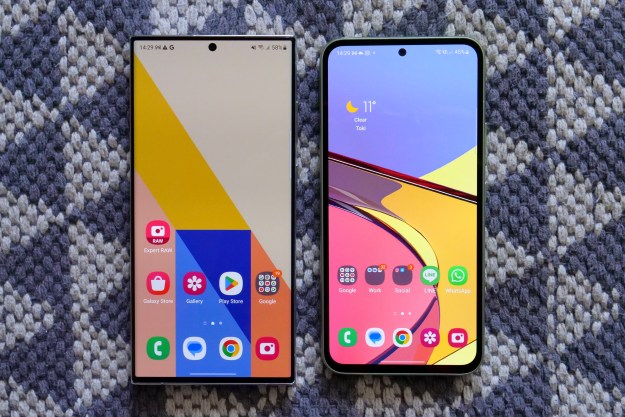Will the next major LG smartphone have a flexible display? If a report in the Korea Times is accurate, then there’s a good chance it will. The article concentrates on LG’s rivalry with Samsung, then slips in a very intriguing sentence right at the end. It states LG is working on flexible displays, which we already knew, but has entered into a partnership with Korea’s finance ministry, and, “aims to ship its first batch of flexible displays later this year.”
This comes after LG Display announced a huge increase in funding at the beginning of the year, confirming at the time a high percentage of the research and development budget would go on so-called advanced technologies, including next-generation flexible and transparent displays. It looks like it’s already beginning to pay dividends.
Samsung has been the primary contender for releasing a flexible screen device for some time, and showed its Youm concept hardware during its CES 2013 press conference. However, it has been careful not to speak to soon, saying the tech is still not ready for public release. LG has also been pushing the flexible screen tech boundaries for a while, having been responsible for the first flexy e-paper display which found its way on to the Wexler eReader last year.
However, LG also has a history of talking up exciting screen tech, only to be beaten to the mainstream market by someone else. For example, it made a lot of noise about its 5-inch, 1080p smartphone screen when such a high resolution on such a small scale was almost unheard of, but it was HTC making headlines with the Butterfly/Droid DNA first.
That said, we’re hopeful LG will give us a flexible screen this year, although it’s likely to be marketed more as an unbreakable display than anything else, thanks to the lack of flexible processors, batteries and other essential internal components stopping our bendy phone dreams from coming true. Not that it matters, as a screen which won’t break when we drop our phones still sounds pretty good to us. On which phone could the flexible screen make its debut? Well, the rumored Optimus G2 has supposedly has a late 2013 release…
Editors' Recommendations
- Best Samsung Galaxy Z Fold 4 deals: Grab the foldable phone for $700
- Foldable phone deals: Samsung, Motorola, Google, and more, from $500
- Samsung’s next folding phone could be cheaper than we thought
- How to try Samsung’s Galaxy AI on any iPhone or Android phone
- Best Samsung Galaxy S23 Ultra deals: How to get the phone for free



